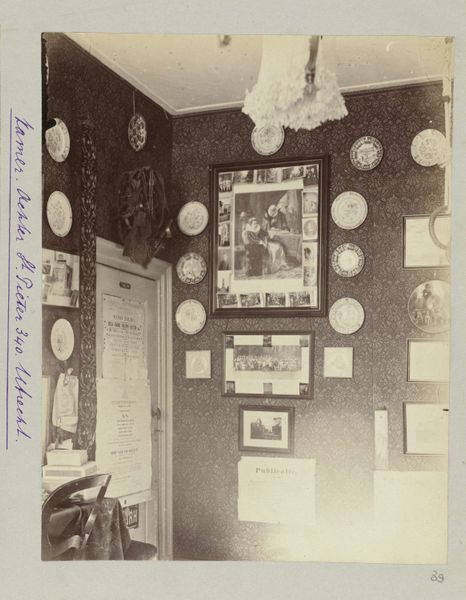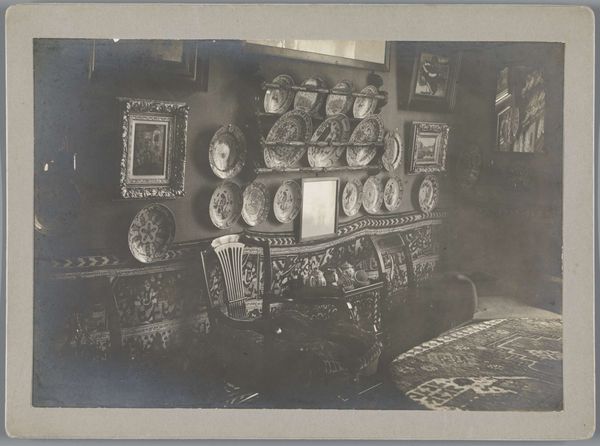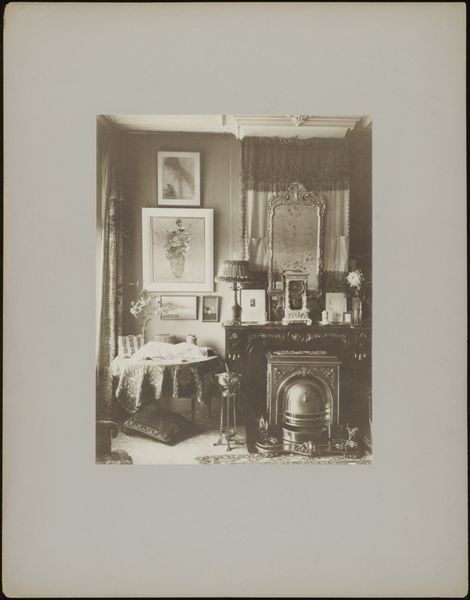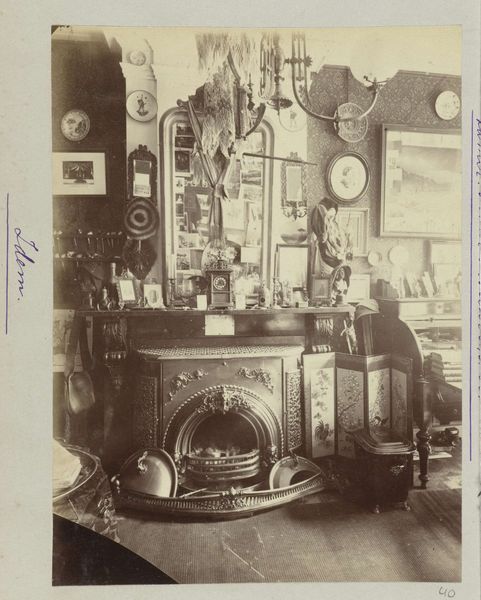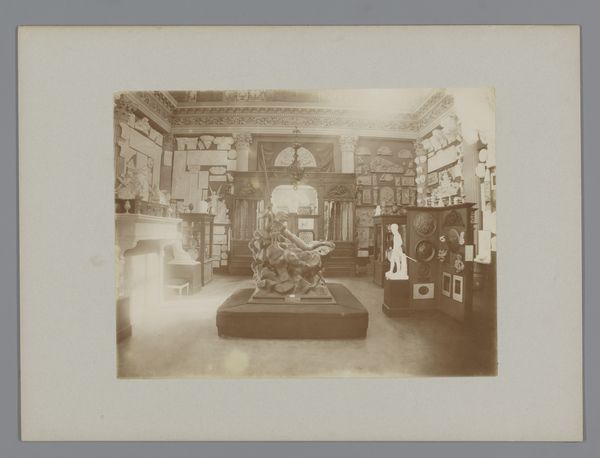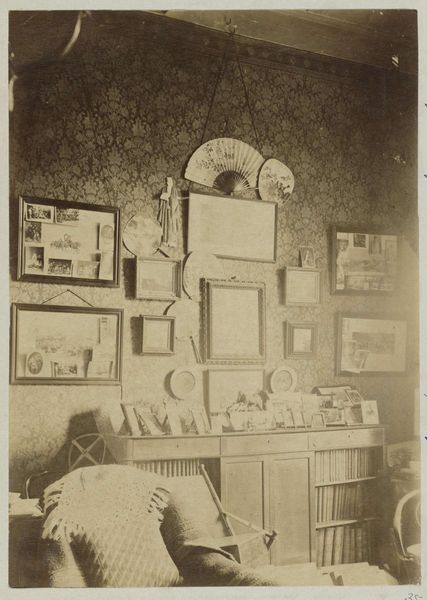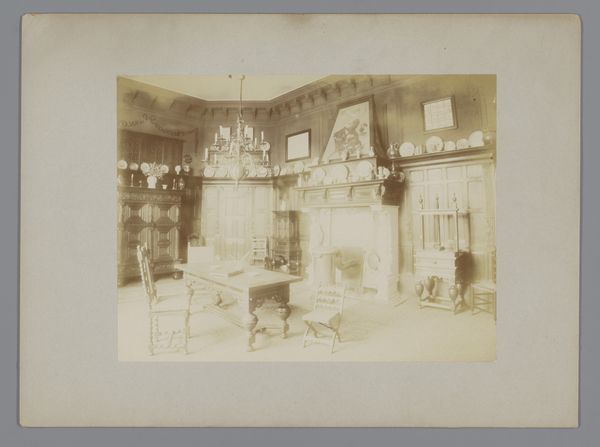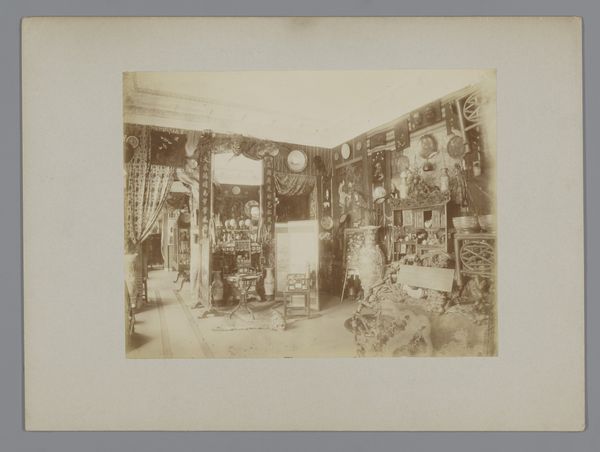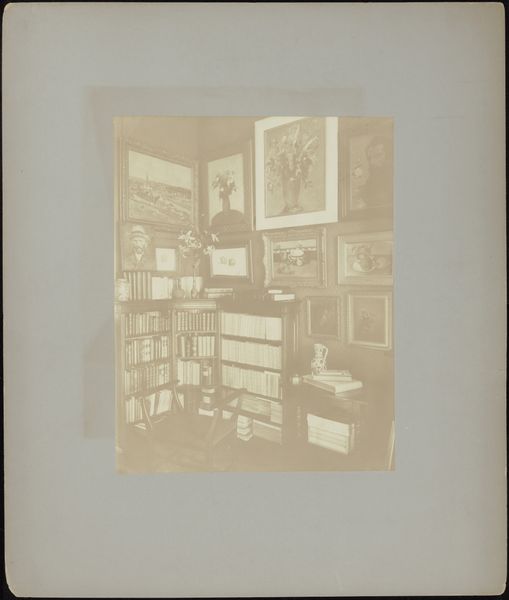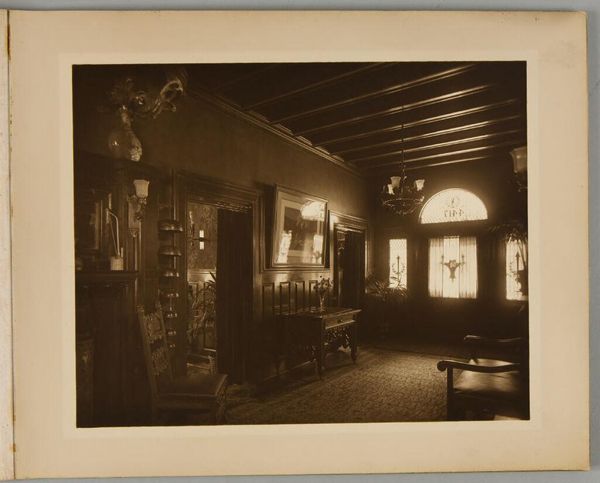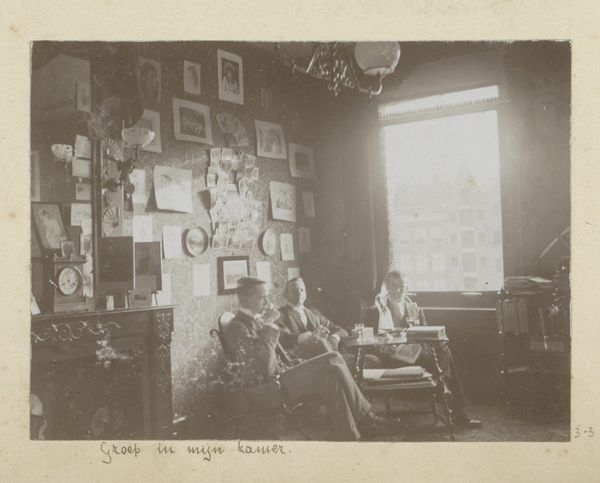
#
faded colour hue
#
photo of handprinted image
#
aged paper
#
water colours
#
muted colour palette
#
ink paper printed
#
watercolour bleed
#
watercolour illustration
#
soft colour palette
#
watercolor
Dimensions: height 168 mm, width 118 mm, height 190 mm, width 168 mm
Copyright: Rijks Museum: Open Domain
Curator: Willem Witsen’s “Foto van de vitrinekast W98” captures, in faded tones, a display cabinet from around 1860 to 1915. My first impression is hushed reverence; it’s like peeking into a room frozen in time. Editor: Immediately, I'm struck by the stillness and formality. These objects, these heirlooms encased in glass—it evokes a strong sense of social class and domesticity, a certain cultivated femininity of the period. Curator: Yes, "cultivated" is perfect. And look closer; you see how light catches on the glass of the cabinet and reflects off the porcelain. There's something very tangible, yet ethereal, about the whole scene. Editor: Absolutely. And beyond the aesthetics, I think there's something powerful about cataloging domestic objects this way. It's almost like creating a visual inventory of values, taste, and status within the Dutch bourgeoisie. The plates are so orderly. Curator: Orderly but not sterile, somehow. I imagine those plates were used. Meals were served, conversations happened...it all lingers, faintly, like a perfume. Do you think he loved it, this room? Or was it just there to be cataloged in time. Editor: It could be read as an implicit critique, too. Is this a celebration or is it exposing a particular form of rigid, exclusionary culture? Look how those objects dictate so much of this world. It could be seen as an assertion of material control in a rapidly modernizing era. Curator: Maybe both at once, isn't that the beautiful problem? He seems content with a photograph. To me, that's art. Witsen distilled something intangible here. He has turned what others might have deemed commonplace into something poignant. The light reflecting within the glasses reminds me of my parents; looking through the dust of their belongings brought about memories of their lives and the changes the world goes through. Editor: I agree. The power here resides precisely in how it reveals unspoken cultural scripts, especially concerning class and gender roles, as those domestic spheres and objects became symbols of social distinction. Curator: In a simple picture of porcelain, it reflects an inner world and the objects we hold dear and are lost to us by time, don't you agree? Editor: I see those echoes. A potent image, after all, is a mirror reflecting ourselves and those like us in a past we have come to change.
Comments
No comments
Be the first to comment and join the conversation on the ultimate creative platform.

